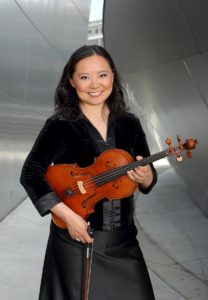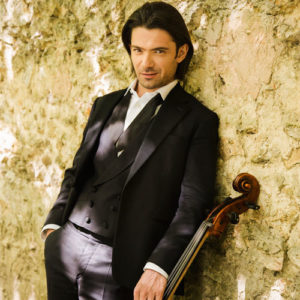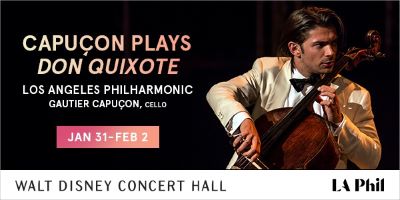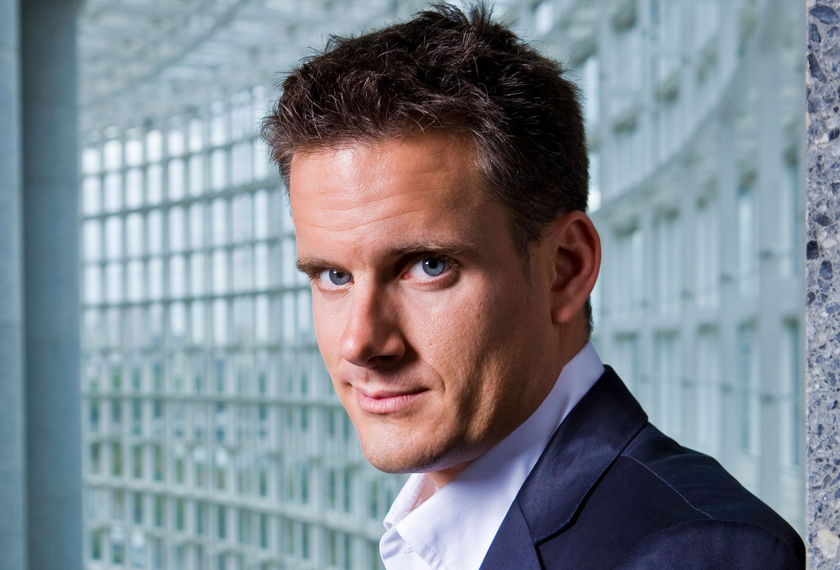STRAUSS RELIEVER
A few years ago, I saw Richard Strauss’s opera, Elektra. Let me just say that even with moments of beautiful, chilling music it veered into atonal territory, sounding like a disjointed, anticlimactic Danse Macabre, but without the dance. The vocal lines skewed towards the upper range which not only grated on the ear, but the spine as well. I thought, why are all of these Wagnerian sopranos screaming? Is this the same Strauss whose tone poems are some of the most ravishing in the repertoire? (While Richard [pronounced ree-khard] wrote waltzes, he is not even closely related to the Viennese Strausses: Waltz King Johann, his brother Josef, and dad Johann senior.)
Listening to Swiss conductor Philippe Jordan leading the LA Phil in two Strauss works today, I was reminded that — along with the likes of Gustav Mahler — the Bavarian had been dismantling the rules of composition when he wrote his symphonic poems. As with Bruckner, he ended up writing lengthy works that almost defied the previous musical era, wringing Classicism out of his work and coming up with something new that defied traditional labels. Let scholars — of which I most certainly am not — toss around phrases like “heavily-modified rondo,” I think of it as a musical adventure.
With careful phrasing and outstanding ensemble balance, Jordan led Don Quixote (1897) to glory in the first half of a program which ends Sunday. With his other Don, Don Juan (1888), Strauss created a new musical genre: the tone poem, in which a literary “plot” is treated with considerable program detail. A revolutionary thing, as its structure follows a dramatic arc, allowing Strauss to have the music unfold organically as the plot reveals itself. To fresh ears, Don Quixote may be difficult to follow, versus, say The Sorcerer’s Apprentice. There’s a lot of characters, so there are over fifty themes!
 One of the greatest aspects for me is the astounding orchestrations, which allow every instrument to show off. Jordan is a superb Strauss conductor, shaping swells and balance into a coherent narrative such that my attention never flagged. The work contains ten variations, mostly representing Quixote’s adventures, plus an introduction and an epilogue finale; Jordan wisely allowed no chance for the audience to applaud between “movements.” This satiric work is full of fantasy and high spirits, and Jordan just wanted to set it free.
One of the greatest aspects for me is the astounding orchestrations, which allow every instrument to show off. Jordan is a superb Strauss conductor, shaping swells and balance into a coherent narrative such that my attention never flagged. The work contains ten variations, mostly representing Quixote’s adventures, plus an introduction and an epilogue finale; Jordan wisely allowed no chance for the audience to applaud between “movements.” This satiric work is full of fantasy and high spirits, and Jordan just wanted to set it free.
But it’s not just the conductor and the orchestra combining to make the contributions of various instruments clear and telling, but Artistic Director Gustavo Dudamel, who has been shaping the LA Phil for years. Indeed, the sound here is close to peerless. Especially noteworthy is the clear separation between orchestra and individual instruments. Often despite the best efforts of performers, even solos can get lost in the orchestral sound. Not here. I could even hear every pluck of Lou Anne Neill’s harp strings, which normally get drowned in a massive assemblage like this (I counted over ninety players on stage). Marion Kuszyk’s solo oboe that opens Don Quixote sounds as if it were just inches from your face. We also have the evocation of nature’s wide-open spaces, birdsong, and rarely played wind machines (two!), all of which show up in Strauss’s Alpine Symphony.
Looking as ridiculously handsome as ever in a three-piece, slim-cut, midnight-blue tuxedo suit open at the neck, Gautier Capuçon played the windmill-tilting Quixote — using his cello naturally. He had a riot with his performance, creating a rich, luscious sound. His vivid textures and drama came across with warmth and humanity. Sancho is represented by the viola and tenor tuba (or here a euphonium — I couldn’t tell from my vantage point) which was seated next to the bass clarinet (an instrument I always have trouble picking up anywhere!). Principal violist Teng Li quite simply blew us away, she gave us such a mournful yet playful sound. With  strongly etched detail, exquisite phrasing and strong character touches, this Don and Sancho Panza are more than notes on a page. Concertmaster Martin Chalifour contributed with exquisite dialogues with Capuçon, who actually fanned off Chalifour after the work as if he were overheating.
strongly etched detail, exquisite phrasing and strong character touches, this Don and Sancho Panza are more than notes on a page. Concertmaster Martin Chalifour contributed with exquisite dialogues with Capuçon, who actually fanned off Chalifour after the work as if he were overheating.
The second half is another well-known Strauss, this written a year later in 1898: Ein Heldenleben (A Hero’s Life), which has some incredibly beautiful, powerful and harrowing music. With those beefy, sweeping, soaring, stupendous strings resonating deeply in Disney Hall, I found Jordan — who worked without a score — to be the most exciting I’ve heard live. His conducting is a beautiful mix of stately and fluid; sensitive and fiery. For emphasis, he would crouch and lunge like a martial arts musician. Instead of sounding like a mere soundscape, which it has in some hands, we have an amazing journey here. The brass rumbled from here to Spain, and additional applause to Andrew Bain’s horn and Joseph Pereira’s timpani. Jordan is to be praised for emphasizing the dramatic vitality of both of these scores and for making the often complex lines stand out clearly. Awesome.
photos courtesy of LA Phil
All-Strauss conducted by Philippe Jordan
Los Angeles Philharmonic
Gautier Capuçon, cello; Teng Li, viola
Walt Disney Concert Hall
ends February 2, 2020
for tickets, call 323.850.2000 or visit LA Phil


